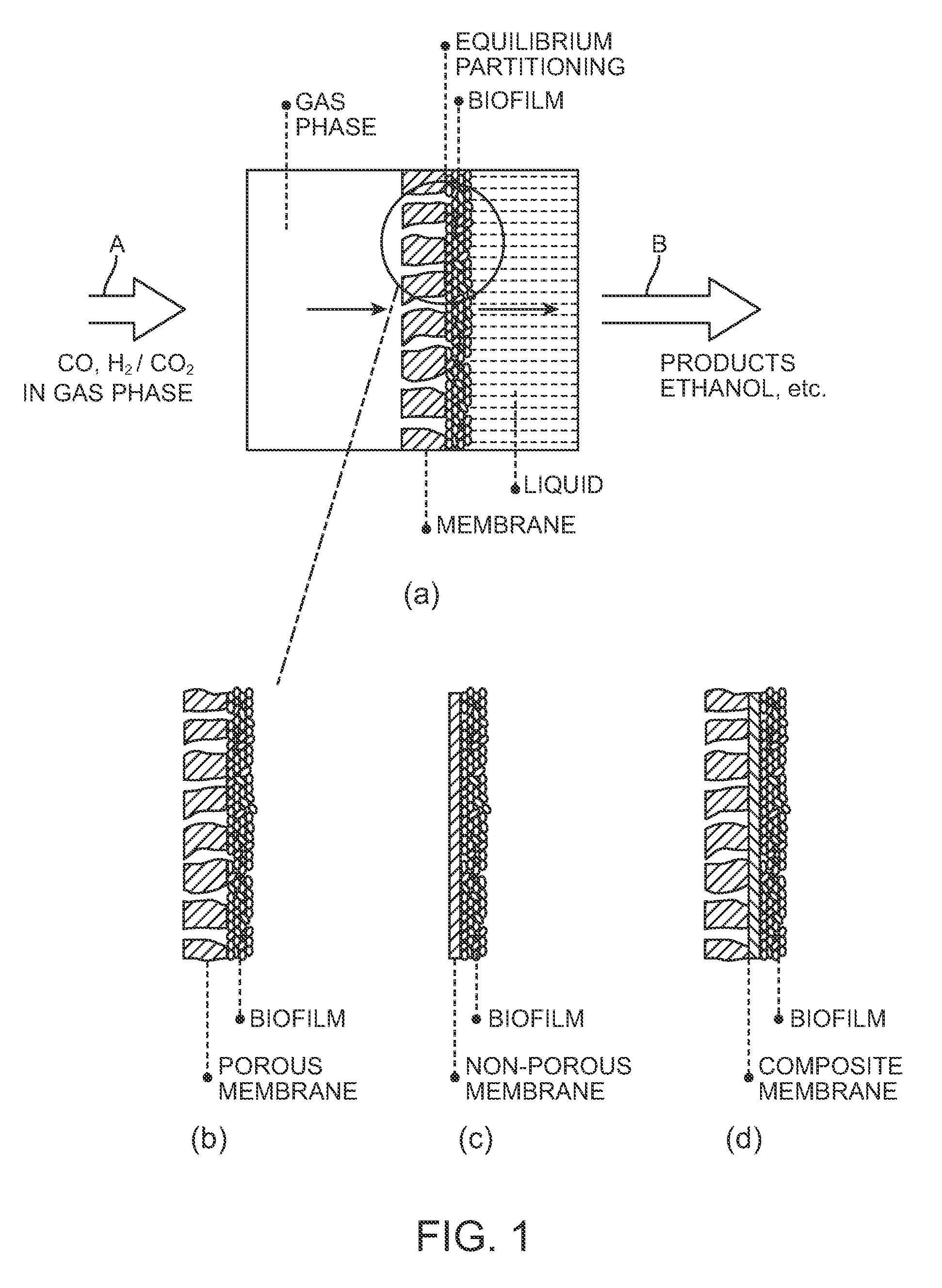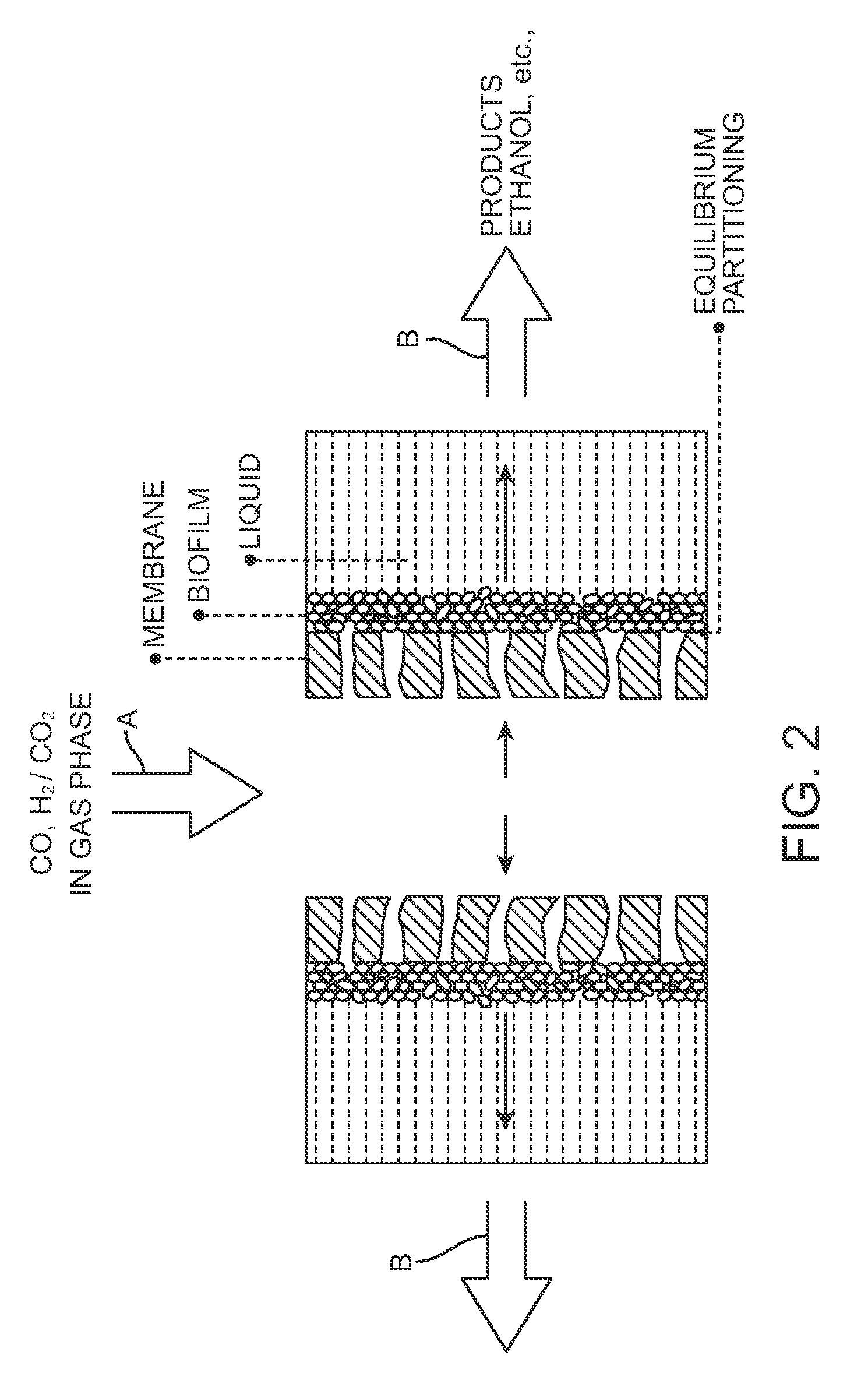Modular membrane supported bioreactor for conversion of syngas components to liquid products
a bioreactor and module technology, applied in bioreactors/fermenters, specific use of biomass after-treatment, apparatus sterilization, etc., can solve the problems of inability of conventional yeasts to ferment csub>5/sub>sugar to ethanol, and inability to achieve bioconversion. , to achieve the effect of reducing the number o
- Summary
- Abstract
- Description
- Claims
- Application Information
AI Technical Summary
Benefits of technology
Problems solved by technology
Method used
Image
Examples
example
[0099]A Liqui-Cel® membrane contactor MiniModule® 1×5.5 from Membrana (Charlotte, N.C.) is used as a membrane supported bioreactor for the conversion of carbon monoxide and hydrogen into ethanol. This membrane module contains X50 microporous hydrophobic polypropylene hollow fibers with 40% porosity and 0.04 μm pore size. The fiber outer diameter is 300 μm and internal diameter 220 μm. The active membrane surface area of the module is 0.18 m2. A gas containing 40% CO, 30% H2, and 30% CO2 is fed to the lumen of the fibers at 60 std ml / min and 2 psig inlet pressure and the residual gas exits the module at 1 psig outlet pressure. The membrane module is connected to a 3-liter BioFlo® 110 Fermentor from New Brunswick Scientific (Edison, N.J.). The fermentation medium having the composition given in Table 2 is pumped from the fermentor, flows through the shell side of the membrane module, and returns to the fermentor. The flow rate of this recirculating medium is 180 ml / min, and the pressu...
PUM
| Property | Measurement | Unit |
|---|---|---|
| pressure | aaaaa | aaaaa |
| pressure | aaaaa | aaaaa |
| area | aaaaa | aaaaa |
Abstract
Description
Claims
Application Information
 Login to View More
Login to View More - R&D
- Intellectual Property
- Life Sciences
- Materials
- Tech Scout
- Unparalleled Data Quality
- Higher Quality Content
- 60% Fewer Hallucinations
Browse by: Latest US Patents, China's latest patents, Technical Efficacy Thesaurus, Application Domain, Technology Topic, Popular Technical Reports.
© 2025 PatSnap. All rights reserved.Legal|Privacy policy|Modern Slavery Act Transparency Statement|Sitemap|About US| Contact US: help@patsnap.com



